Gandan monastery photos.
THE REGIONS OF MONGOLIA
SIGHTS OF INTEREST IN MONGOLIA
GANDAN MONASTERY

Originally situated in the center of Ulaanbaatar, Gandan Monastery was moved to its present location by the 5th
Bogd Jebzundamba in 1838.
Over the next century the Monastery grew to include nine datsans or institutes, a library and housed a community
of around 5000 monks. Gandan became an important center for learning and practicing Buddha's teachings, hot only in
Mongolia but for the entire Mahayana Buddhist community.
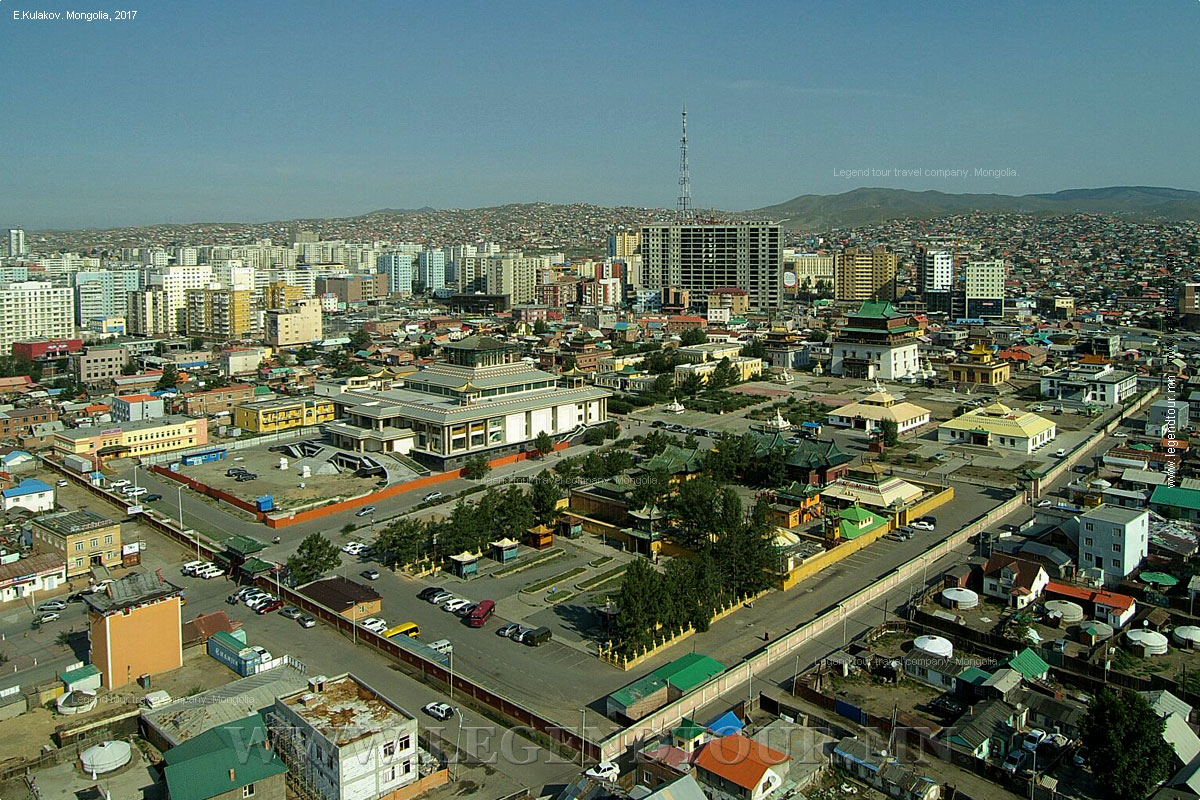
Centre of Mongolian Buddhists Gandantegchenling Monastery (Gandan monastery).
Small mobile monasteries functioned in Mongolia, and in 1838 the Gandantegchinlen monastery was founded as the religious center of
Sutra-Tantra Buddhism at the site of Dalkha hill. It grew into a complex of colleges including a college of basic Buddhist teachings, departments of Astrology and Medicine, and as such was the largest
center of the Mongolian Buddhism.
The first temple of the Monastery was built at the initiative of the Mongolian living Buddha, the Fifth Incarnation
Bogdo, Chultem-Jigmid-Dambijantsan. It was constructed by Mongolian masters and made mostly of wood and earth following Mongolian national architectural designs, with gold plated roofes and topmost Buddhist symbolic - decorations. Many of the Boddhisattyas statues and images established in Gandan temple are of significance. In the temple there are a bronze statue of the Lofty Noble Rimpoche Dzanabazar - the
Mongolian living Buddha of the First Incarnation sculpted by himself at the behest of his mother; the collection of the Buddha's fundamental teachings, the Tripitaka
(Gangiur) in 108 volumes; the silver statue of the famous Tsong (Khapa) of Amdo made in XVI century in Western Oirat Mongolia.
Vajra-Tara temple was built in 1840-1841, of stone and brick with ceramic rooves and
goldplated decorations. The main altar in this temple is the Vajra Tara's statue crafted by the lofty Noble Rimpoche Dzanabazar in 1683. The main altar of Dzu temple is a statue of the standing Buddha with his two disciples, made in Dolon Nuur, Inner Mongolia, in the early XIX century.
The two storey building "Didinpovran" was built as a library for the Fifth Incarnation of the Mongolian living Buddha,
Chultem-Jigmid-Dambijantsan, with ceramic rooves and goldplated topmost decorations. The fifth building now serves as the library of the Gandantegchinlen monastery, containing over
50,000 books.
Additionally the temples house the "Eight Noble Decorations", "Damdin Choijil", images of Mahayana, Hinayana Lord and Bodhisattyas and sixteen arhats crafted by Mongolian, Tibetan and Indian artists, embroidery, masterpiece images of Bodhisattvas made by Mongolian women artists as well as a number of satirical and
humorous feature drawings.
In 1938, the communists suppressed religious
communities in Mongolia. They destroyed around 900 monasteries, though a handful
were turned into museums. The monks were killed, jailed, or forced to join the
army or laity. Five temples of Gandan Monastery were destroyed. The remaining
temples were used to accommodate Russian officials or used as barns to keep
their horses.
In 1944 after a petition from several monks,
Gandan Monastery was reopened but its functions were carried out under the
strict supervision of the socialist government.
In 1990, after the Democratic Revolution and with
Buddhism flourishing once more, Gandan Monastery embarked on an ambitious
restoration program around the country.
There are currently 10 datsans and temples
operating at Gandan Monastery, and approximately 900 monks.
The souvenir shop, to the left as you enter the main southern gate of the monastery, sells non-touristy religious
artefacts, including miniature copper bowls, incense and scroll paintings, as well as items like Mongolian felt hats.
You can take photographs around the monastery, but not inside the temples. The monastery, at the end of Ondor Geegen Zanabazaryn
Gudamj, is open from about 9
a.m. to 9 p.m. daily, and there is no entrance fee. Try to be there for the captivating ceremonies - they usually start at around 10
a.m., though you may be lucky and see one at another time. Most chapels are closed in the afternoon.
GANDANTEGCHENLING /1938/
Along the left wall are the 108 volumes of the Kanguir, penned in the 14th century by Mongolian masters in gold ink on black paper.
In the central glass case at the back is a large statue of the Buddha made by Mongolian lamas in 1956 to celebrate the 2500 anniversary of the
Buddha's death.
In another case is a self-portriat of Zanabazar, the first Jebzundamba of Mongolia, made in the 1680s
at his mother's request. It is surrounded by small statues of the seven subsequent Jebzundam Along the right wall are gold-plated
statues of the Bodhisa: Amitayus, the Bodhisattva of Longevity.
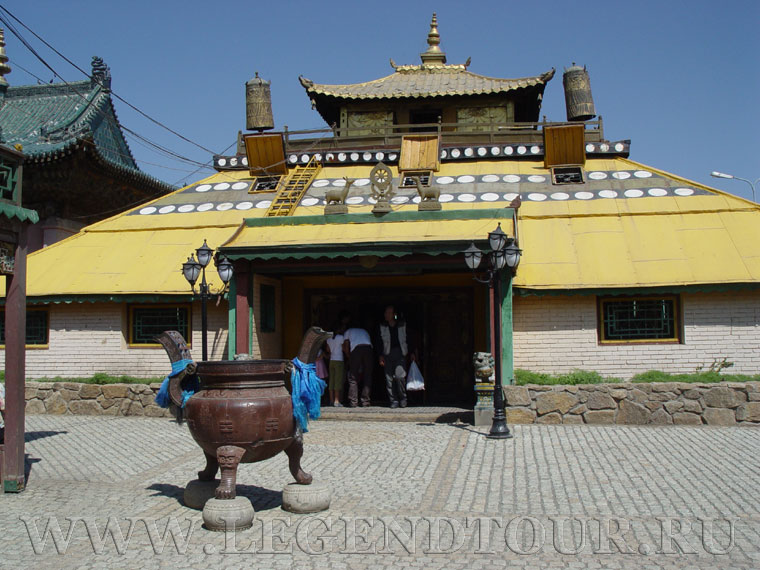
Centre of Mongolian Buddhists Gandantegchenling Monastery (Gandan monastery).
VAJRADHARA TEMPLE /1840/
On the main altar is a statue of Vajradhara, a Buddha from Tantric practice, made by Zanabazar
in 1683. The temple is made of earth and brick and the top decoration is gilded gold.
Daily service is performed at this temple.

Gandantegchenling Monastery (Gandantegchinlen Monastery, Gandan monastery).
DEDANPOVRAN
This temple was built at the beginning of the 1900s. The 13th Dalai Lama lived here in 1904.
The temple is made of earth and brick.

Gandantegchenling Monastery (Gandantegchinlen Monastery, Gandan monastery).
LIBRARY
This building originally housed the remains of the Mongolian Bogd Lamas. Later, when Gandan
Monastery was reopened it became a library. The library contains approximately one million
sutras in Mongolian, Tibetan and Sanskrit. There are also some surgical instruments from the
16 century kept here.

Gandantegchenling Monastery (Gandantegchinlen Monastery, Gandan monastery).
This imposing building, which has become a symbol of independence for the Mongolians, is
a temple for the veneration of Janraisig (Chenresig in Tibetan), the Bodhisattva of Compassion.
It was built in 1911 at the time of Bogd Khan, the 8th Jebzundamba (Mongolia's last reincarnate
spiritual and temporal ruler). The original statue was destroyed by the communists in 1938.
The current statue was completed in 1996 with the generous donations of Buddhist devotees.
The Janraisig statue stands 26.5 metres. It is made of copper from Erdenet Mine and is gilded in gold.
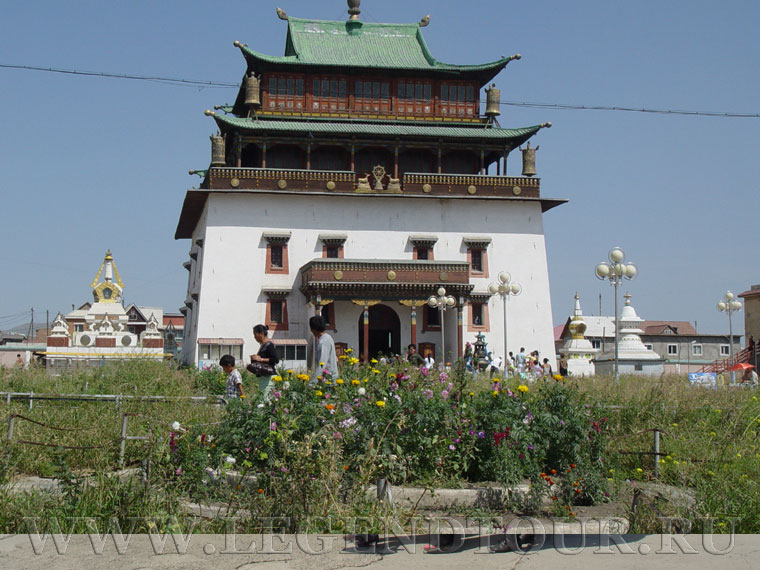
Gandantegchenling Monastery (Gandantegchinlen Monastery, Gandan monastery).
DECHENGALPA DATSAN (KALACHAKRATANTRIC COLLEGE)
Originally in the centre of Ulaanbaatar, this Datsan was rebuilt at Gandan in 1992. On the
throne is a portrait of the Bogd Khan. Every spring the Datsan holds the Kalachakra ritual.
Construction of this Datsan was begun in 1800 after the fourth Bogd Jetsundamba visited
Baruun Zuu Kalachakra Monastery in Tibet and witnessed the Kalachakra Initiation
performed by Lkhoh Jalsrai Gegeen. The Bogd opened the Dechen Galpa Datsan in 1801
and it operated until its closure in 1937. In 1961 a Kalachakra ceremony was held for the
first time since Dechen Galpa closed at one of Gandantegchenling Monastery's temples once
a year. When His Holiness the Dalai Lama performed the Kalchakra Initiation at Varanasi in
India in 1990 he declared that the next Kalachakra Initaition would be held in Mongolia
at Gandantegchenling Monastery. Mongolians immediately started preparations and began
reconstruction of the Dechen Galba Datsan. Before the initiation in 1995, Tibetan teachers
visited to instruct how to make a sand mandala. In the summer of that year. His Holiness
the Dalai Lama visited and j performed the Kalachakra Initiation. Since that time, the
Datsan chants the Kalachakra Ritual every year on the fifteenth of the last month of spring
of tl Lunar Calendar.
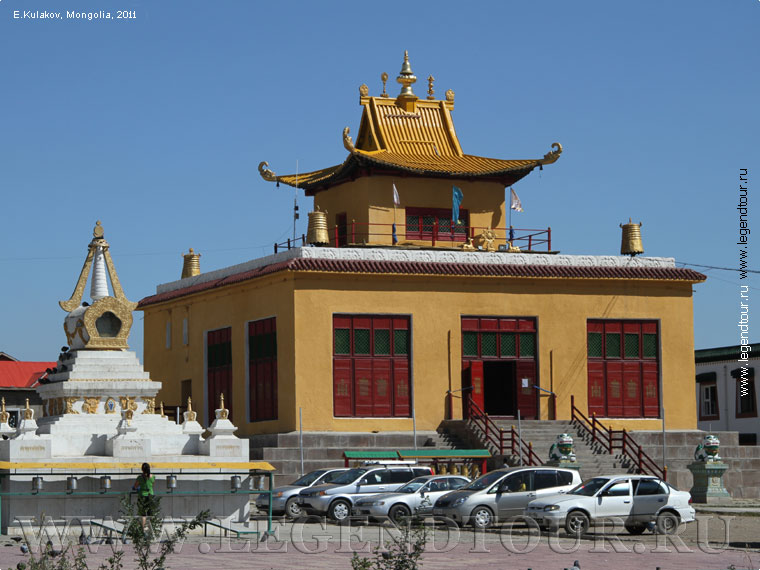
Gandantegchenling Monastery (Gandantegchinlen Monastery, Gandan monastery).
IDGACHOINZENLING DATSAN
This Datsan was established by the 8th Bogd Jebzundamba. Its practices were based on the
works of Tibetan scholar Sera Jebzunpa. The Datsan was destroyed in 1938. Former disciples
Ven. Tserendemchig and Ven. Naidan wished to restore their home datsan and had it re-opened
in 1990. The new temple was opened in 2004.
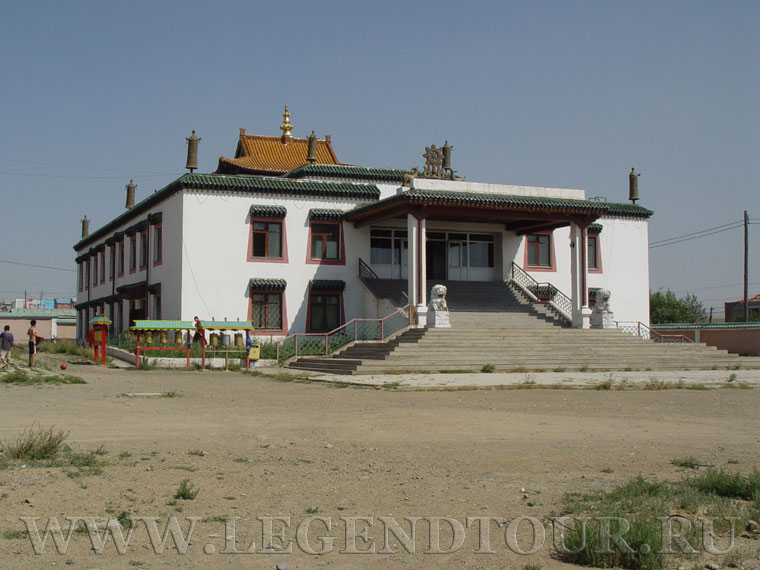
Gandantegchenling Monastery (Gandantegchinlen Monastery, Gandan monastery).
TASHCHOIMPHEL DATSAN
This Datsan was established by the 2nd Bogd Jebzundamba and Manjusri Khutagtu in 1756 but
was destroyed in 1938. The Datsan was restored in 1990 and the temple was completed in 1994.
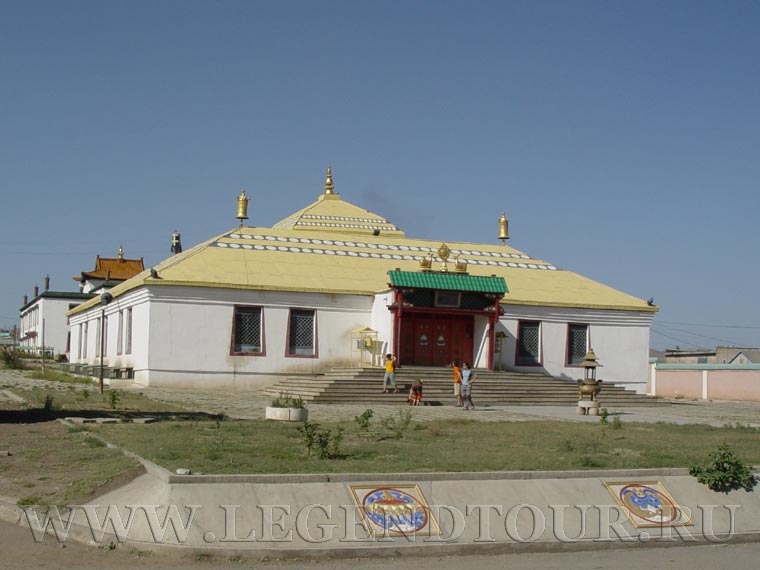
Gandantegchenling Monastery (Gandantegchinlen Monastery, Gandan monastery).
GUNGAACHOILING MONASTIC UNIVERSITY /DATSAN/
This Datsan was established by the 4th Bogd Jetsundamba in 1809 and followed Tibetan
scholar Panchen Sonamdagva's works for training and practice. The datsan trained
three thousand monks including the Mongolian scholars Agvanrinchen, Darp Pandita
and Zava Damdin Gavju. The Datsan was revived in 1990 and began training new
disciples. Presently many monks practice and study at Ciungaachoiling.
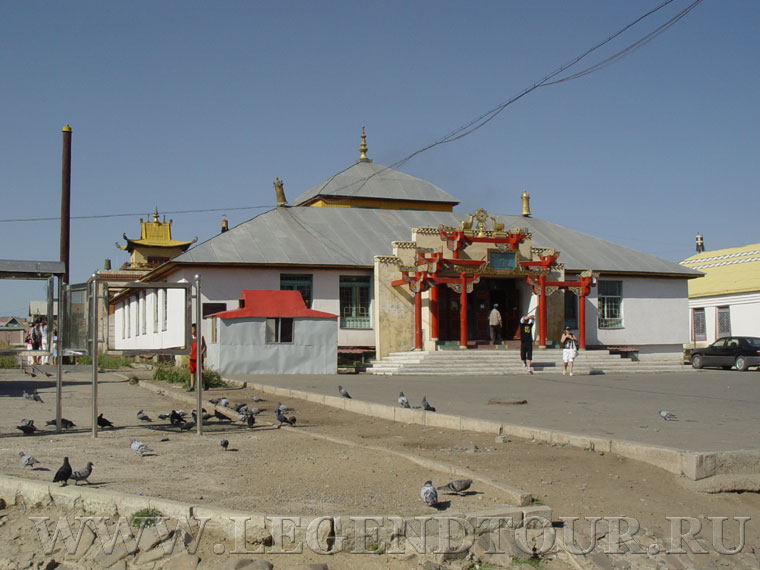
Gandantegchenling Monastery (Gandantegchinlen Monastery, Gandan monastery).
BUDDHIST UNIVERSITY OF MONGOLIA
The Mongolian Buddhist University of Mongolia was established in 1970. The University
combines modern education with traditional teaching methods. Four year Bachelor's
Degree programs are offered and currently there are two departments: The
Department of Internal Sciences which includes majors in Buddhist Philosophy and
Chanting; The Department of Common Knowledge which includes Tibetan, Sanskrit and English language
majors as well as a Traditional Medicine and Astrology major.
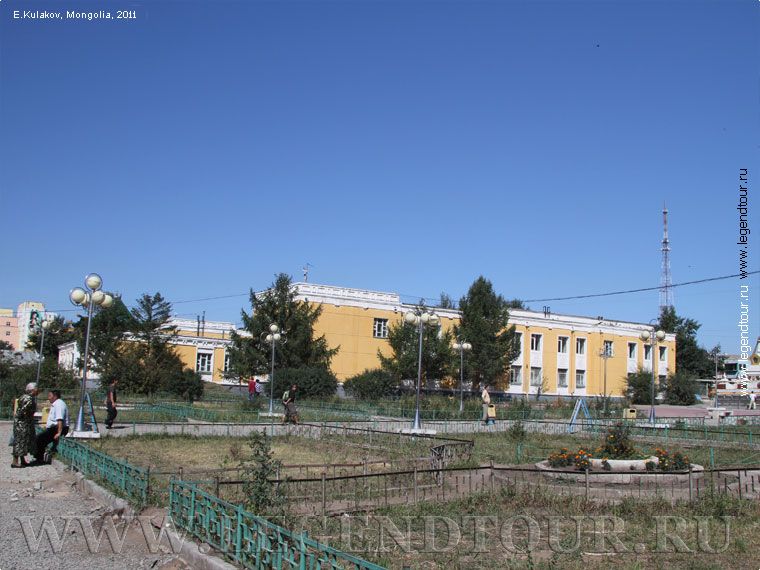
Gandantegchenling Monastery (Gandantegchinlen Monastery, Gandan monastery).
BADAM YOGA DATSAN
The Datsan was built in 1745 by the Second Bogd Jebzundamba. The Datsan holds reciting and
chanting puja (worship). In 1938, activity at the Datsan was stopped in 1938. The Datsan
was reopened in 2002 and is now located at Geser Temple, just east of Gandan.
TRADITIONAL MEDICINE AND ASTROLOGY COLLEGE
The College's main role was to tell fortunes; predicting specific days and months and their
possible harmful or helpful impacts. Traditional medicine physicians would test and
treat patients' health.
JUD DATSAN
In 1739 this Datsan was built and established by the Second Bogd Jebzundamba. Activity
at the Datsan was shut down in 1938. 50 years later in 1998, the Datsan revived
its practices and now holds Tantric services and chanting rituals.
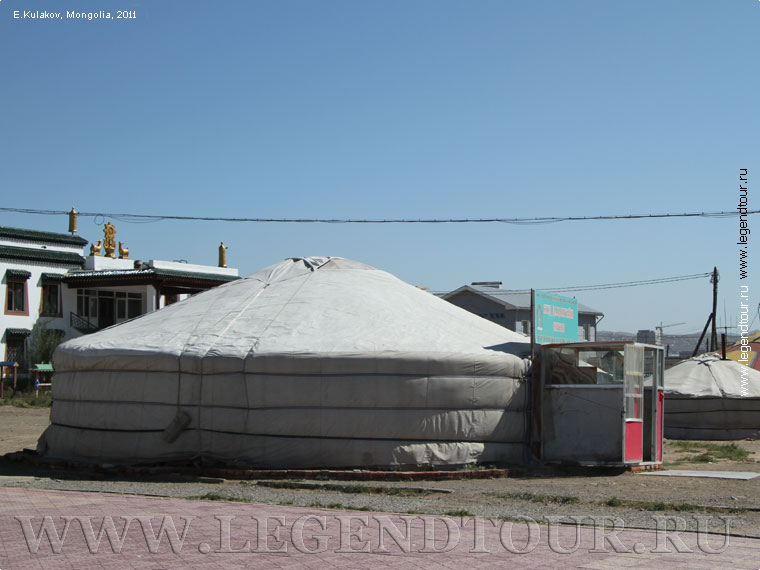
Jud datsan. Gandantegchenling Monastery (Gandantegchinlen Monastery, Gandan monastery).
The Sacred Object of State and the People:
By D.Davaasuren
In the twentieth century, Mongolia twice established a sacred state icon. In
1911, the national independence movement led to the creation of the independent
kingdom ruled by the Bogd Khaan. The first Migjid Janraisig statue, standing 80
tokhoi high (a tokhoi is approximately 40 centimetres) was installed in 1913 as
the symbol of Mongolian independence. Twenty-four years later this statue was
destroyed in the political and religious purges.
After the democratic revolution of 1990, the constitution of the democratic
country of Mongolia inter alia guaranteed every individual the right of freedom
of worship. Symbolically, in 1996 a sacred image representing the state and the
people, the Migjid Janraisig, was re-erected on the site of the original, and
the tenth anniversary of this was celebrated in October 3-27. As a part of the
anniversary celebration, the Gandantegchinlen Monastery ran a number of
events, mostly focused on action in the public, humanitarian, cultural and
educational fields.
The erection, twice, of the Migjid Janraisig was to give a clear
understanding to the people of loving kindness, a key to securing and
consolidating independence, sovereignty and freedom. Both the state and the
public attach great symbolic and actual significance and importance to this
statue.
The Migjid Janraisig is a bodhisattva, a core embodiment of the Buddhist
loving kindness. A bodhisattva is one who generates or has generated great
compassion for the sake of all sentient beings. "I will achieve enlightenment
and show the way for all sentient beings to eradicate suffering."
It is believed that a better world, free from all forms of violence and war,
will be established only through mutual understanding and friendly co-operation
at national and international levels. This is the same concept as the Lord
Buddha's discourse: "Based on mutual respect with a non-discriminatory attitude
of great compassion, peace will prevail throughout the world." The embodiment of
this profound concept is Mongolia's Migjid Janraisig.
Rebuilding the Migjid Janraisig in Mongolia was an announcement to the world
today that Mongolia is a Buddhist country, always ready to co-operate to
establish and preserve world peace.
His Holiness the 14th Dalai Lama says, "I am not spreading Buddhism but I am
spreading humanity." Wherever Buddhism spreads, humani-tarianism will increase.
Migjid Janraising Statue. A 25m gold and bronze statue of Avalokites-vara (Janraisig), built by the Bogd Khaan in 1911, once stood in the main temple at Gandan Khiid. The
magnificent statue was destroyed by the communists in 1937, and the metal taken to Leningrad (St. Petersburg) and melted down to make bullets.
In October 1996, after nearly five years of work, a new statue called Migjid Janraisig (which means 'The Lord Who Looks in Every Direction') was finally consecrated by the Dalai Lama. The 25m high,
20-ton statue is made from copper, gilded with gold donated from Nepal and Japan and covered in gold brocade and over 500m of silk. The statue contains precious stones, 27 tonnes of medicinal herbs,
334 sutras, two million bundles of mantras and, in the base, an entire ger, plus furniture!
ADDITIONAL INFORMATION:
PAGES OF THE PICTURE ALBUM. GANDAN MONASTERY. MONGOLIA
More pictures see in pages photo album
|